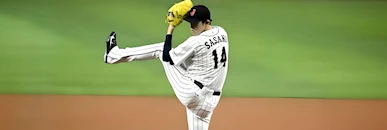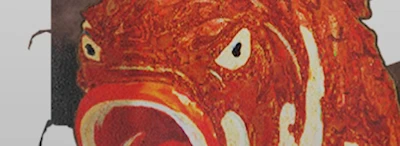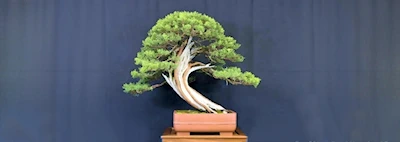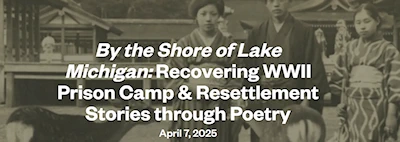Huntington Library, Art, Museum, and Botanical Gardens (Japanese Garden)
Event Location
San Marino, CA 91108
USA
After a year-long closure and a $6.8 million renovation, the historic Japanese Garden reopened in April, marking its centennial as one of the most beloved and iconic landscapes at The Huntington. Completed in 1912, the nine-acre site, with its picture-postcard views of koi-filled ponds, distinctive moon bridge, and historic Japanese House, has attracted more than 20 million visitors since the institution opened to the public in 1928.
Japanese House
'The Japanese Garden is arguably the most popular spot at The Huntington,' says James Folsom, the Telleen/Jorgensen Director of the Botanical Gardens. 'It is a garden that functions on multiple levels at once. It's a magical place, intimate and inspiring, yet at the same time it teaches us about Japan's unique landscape traditions, craftsmanship, horticulture, and rituals.'
WaterfallSeveral new elements enhance this 'magical place.' Among the new features visitors will see is an authentic ceremonial teahouse, situated on a ridge above the existing Japanese House and set within a traditionally landscaped tea garden. A newly created waterfall cascades down the slope, visually connecting the tea garden to the ponds below.
The teahouse, called Seifu-an (the Arbor of Pure Breeze), was donated to The Huntington by the Pasadena Buddhist Temple. Built in Kyoto in the 1960s, it made a return trip to Japan for restoration in 2010. Kyoto-based architect and craftsman Yoshiaki Nakamura (whose father built the original structure) oversaw the restoration. The restored teahouse was then shipped back to San Marino and painstakingly reassembled here under the tutelage of Nakamura and other expert craftsmen who had traveled from Kyoto for the project. Its location on a picturesque ridge provides visitors with a stunning new vantage point from which to admire the vista below. The teahouse will be used, on occasion, for demonstrations of the traditional Japanese tea ceremony. (Unlike the tea shop in the Chinese Garden or the Rose Garden Tea Room, it will not serve refreshments.)
Meanwhile, in the historic core of the garden, extensive restoration work has been done (as anyone who has peered beyond the construction fence in the past year can attest). Age had taken its inevitable toll in the garden: Rotted wood, termite damage, splitting plaster, and shifting soil all demanded thorough attention. A team of architects with backgrounds in historic renovation plus horticulturists, landscape architects, engineers, and Japanese craftsmen undertook the year-long project led by Folsom and horticultural curator David MacLaren.
Japanese Garden RestorationRestoration of the Japanese House, a structure built in Japan around 1904, was led by preservation architect Kelly Sutherlin McLeod. Her research revealed a number of original architectural features that had been covered over or removed during the course of the past century. Elements such as the distinctive curves of the roof line, an elaborately carved ornament atop one of the gables, and original plaster and wood finishes have been restored, giving the house a dramatically different appearance, but one more authentic to the building's past.
Repairs to the central pond system and water infrastructure were another key aspect of the project, along with renovation of the original faux bois (false wood) ornamental trellises that are covered with blooming wisteria in spring. The project also included improvements to pathways, making them more accessible. Landscape architects Takeo Uesugi and his son Keiji Uesugi, both affiliated with California Polytechnic University, Pomona, oversaw design plans for the landscape.
A Storied Past
Japanese Garden 1930
The Japanese Garden is among the oldest and most elaborate of its kind in America. Begun in 1911, it was inspired by widespread Western fascination with Asian culture. As was fashionable at the time, many wealthy Americans and Europeans added exotic gardens to their estates. The Japanese gardens exhibited at world's fairs and expositions in St. Louis, Chicago, and San Francisco helped to fuel the trend. Henry E. Huntington shared this interest, and at the urging of his superintendent, William Hertrich, he decided to build his own Japanese garden on his San Marino estate.
Many of the garden's plants and ornamental fixtures came from a property in nearby Pasadena that had failed as a commercial venture. Purchased in its entirety by Huntington, the materials also included the Japanese House, an example of a type of upper-class Japanese dwelling typical of the 19th century. The moon bridge, commissioned by Huntington, was built by Japanese craftsman Toichiro Kawai.
Japanese GardenAfter the institution opened to the public in 1928, the Japanese Garden became a major draw for visitors. But by the advent of World War II, staffing shortages and the political climate caused the Japanese Garden to be neglected, with parts of it inaccessible to the public, and the Japanese House fell into disrepair. In the 1950s, members of the San Marino League helped support the refurbishment of the buildings and surrounding landscape. In 1968, The Huntington added the Zen Garden and a bonsai display that was expanded in 2010.
Contact
Phone: (626) 405-2100
Location Website
Click to Visit
(For Event Information See Event Website Page)
Sunday, 6 April, 2025
Sunday, 25 May, 2025
Museums with Japanese Art
Learn aboout the rich history and unique art of JapanMuseums With Japanese Art

















